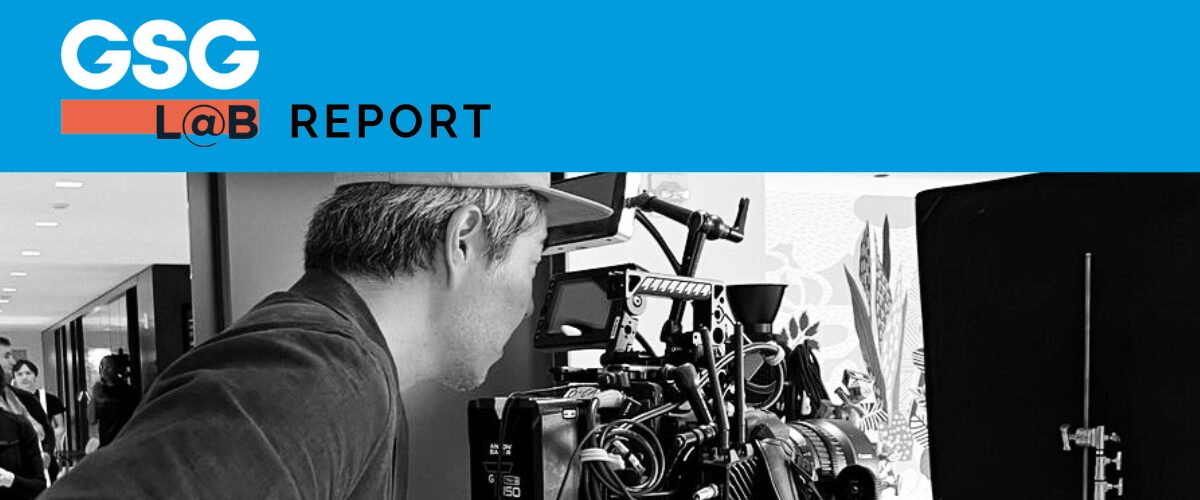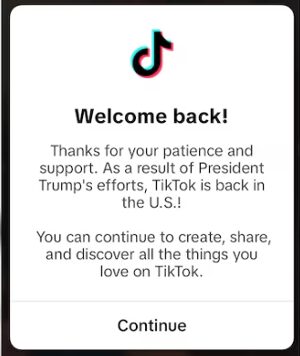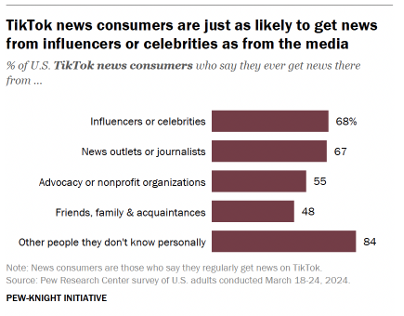
January 30, 2025
Welcome to The L@B Report
Welcome to this month’s issue of The L@B Report from GSG, bringing you news and insights from the intersection of digital media and public affairs. In this issue, we discuss President Trump’s executive order on TikTok, how Americans consume news on the platform, and the relationship between podcasters, young men, and the political right.
This issue of The L@B Report was put together by Ryan Alexander.
In the News
Trump Signs Executive Order to Give TikTok an Extra 75 Days to Find U.S. Buyer
TikTok went dark temporarily in the final days of President Biden’s term
Hours after his swearing in, and just a day after the federal ban took effect, President Donald Trump signed an executive order to delay enforcement of a TikTok ban by 75 days. Trump’s order directed his attorney general to not levy fines against app stores and service providers that TikTok needs to stay online in the United States, effectively ignoring the law and the Supreme Court.
When TikTok restored service, it displayed a message to all users thanking President Trump:

Takeaway
With more than 170 million Americans on the app, TikTok has become a legitimate rival to Meta, Google, and X. While we remain skeptical of President Trump’s efforts to negotiate a deal with ByteDance and the Chinese government to find a U.S. buyer – especially his pledge to have the U.S. government hold a 50% stake in the company – we were struck by TikTok’s efforts to curry favor with Trump.
In addition to the platform-wide message thanking Trump, TikTok CEO Shou Chew attended Trump’s inauguration, and TikTok threw a party for conservative influencers that some say were vital in helping Trump win the election.
At GSG, we have long advised clients to include influencer marketing in their paid media and outreach toolkit. However, with a ban potentially looming again in less than 75 days, it is difficult to commit resources to TikTok specifically – especially given that the platform does not allow for social or political advertising.
When working with influencers or influencer marketing firms, one should seek out influencers that reach large numbers of a campaign’s target audience on multiple platforms, such as Instagram and YouTube, both of which stand to be big beneficiaries if TikTok gets permanently banned.
More Than Half of U.S. TikTok Users Get News on the App
But fewer than 1% of all TikTok accounts that Americans follow belong to news sources
According to a new report from the Pew Research Center, TikTok has become an important news source for many Americans – with 52% of all users saying they regularly get news on the social media platform.
However, that does not mean that users are following journalists and traditional news outlets on the platform: fewer than 1% of all accounts that Americans follow are journalists or traditional media outlets.
This begs the question: How do so many Americans get news on TikTok if they don’t follow news accounts?
This chart sheds light on the answer:

As the bar graph shows, 68% of users say they get news from influencers or celebrities, and 84% say they get news from other accounts they don’t follow – which means they are likely getting it from TikTok’s recommendations’ algorithm.
Takeaway
Americans getting news from non-traditional sources presents a challenge to marketers when thinking about getting messages in front of less informed or less engaged audiences.
As PR Daily writes, one of these challenges is identifying who the micro-influencers are in the first place. With journalists or celebrity influencers, there are typically clear rules of engagement and understandings of how the relationships work. But when anyone on TikTok can go megaviral overnight, there are fewer opportunities to get your organization’s message in front of them, either in a paid capacity or through more traditional earned media techniques, to share that with their audiences.
Influencer identification and outreach – especially among influencers who don’t exclusively post news or political content – must be a part of any strategy to reach those who are not already likely to be highly engaged on a particular election, issue, or topic. Further, the brands who are successful will recognize that their content may need to take a creative or non-traditional form to break through.
Bloomberg Analysis: How YouTubers and Podcasters Turned Young Men into a Political Force for Donald Trump
Democrats must rethink their approach to alternative media
After the election, the L@B Report discussed how one of President Trump’s keys to victory was his outreach to younger men through alternative forms of media, such as podcasts, UFC fights, WWE events, and college football games.
Since then, a Bloomberg analysis of more than 2,000 hours of podcast videos on YouTube sheds light on how podcasters in particular have helped push young men to Trump by margins not seen by a Republican candidate in more than two decades.
Takeaway
There is a lot of interesting data in Bloomberg’s report, but the chart that most caught our eye was this one:

Trump appeared on all nine of the podcasts analyzed and racked up more than 100 million views combined.
According to Edison Research, nearly 50% of people over the age of 12 listen to a podcast monthly – and of the podcasts analyzed by Bloomberg, over 80% of their audiences are male. If Democrats and left-leaning advocacy campaigns are to win back support from young men, they not only need to appear on male-dominated, entertainment-based podcasts – but also find messages that resonate with them.
More from GSG
Congratulations to GSG’s leaders Jefrey Pollock and Nick Gourevitch! They were named among the top Democratic consultants in New York on City & State’s 2025 Political Consultants Power 100 list, with GSG ranking #2 overall. Their leadership and game-changing strategy continue to set new standards in political consultancy, delivering standout wins in New York and beyond.